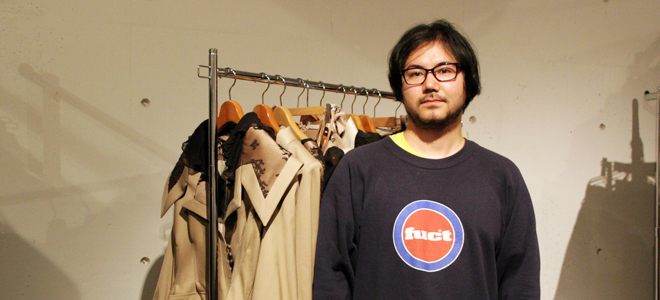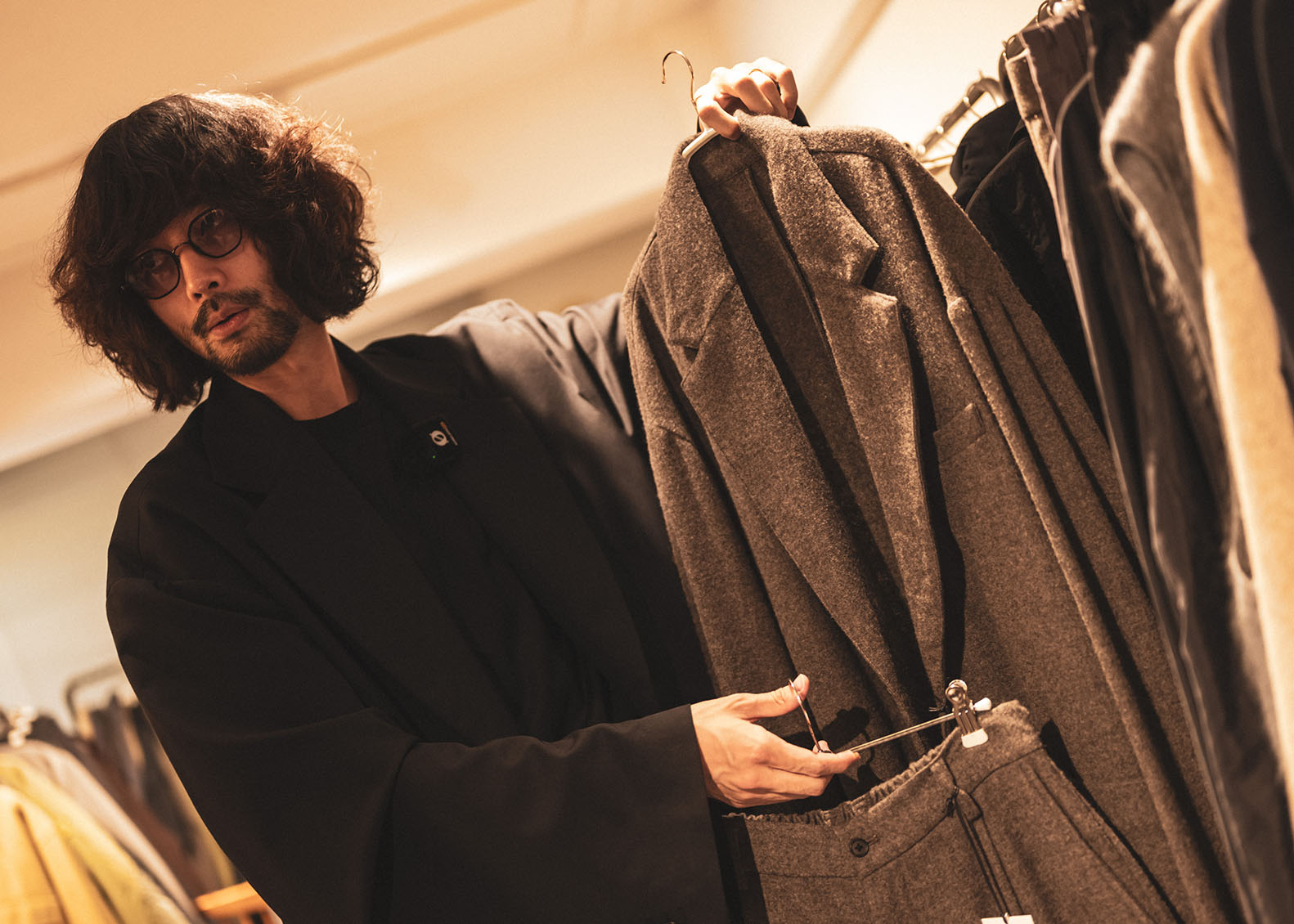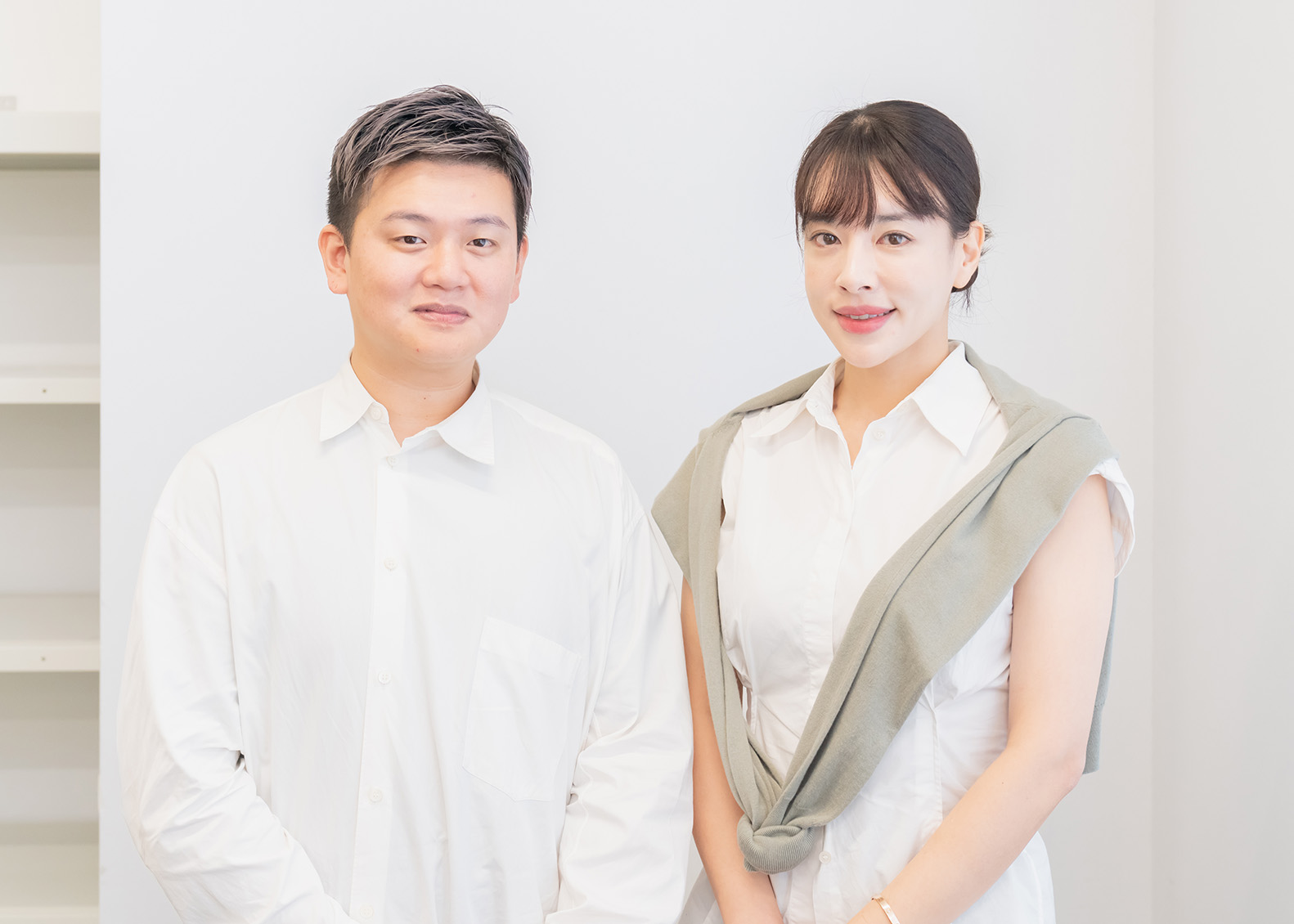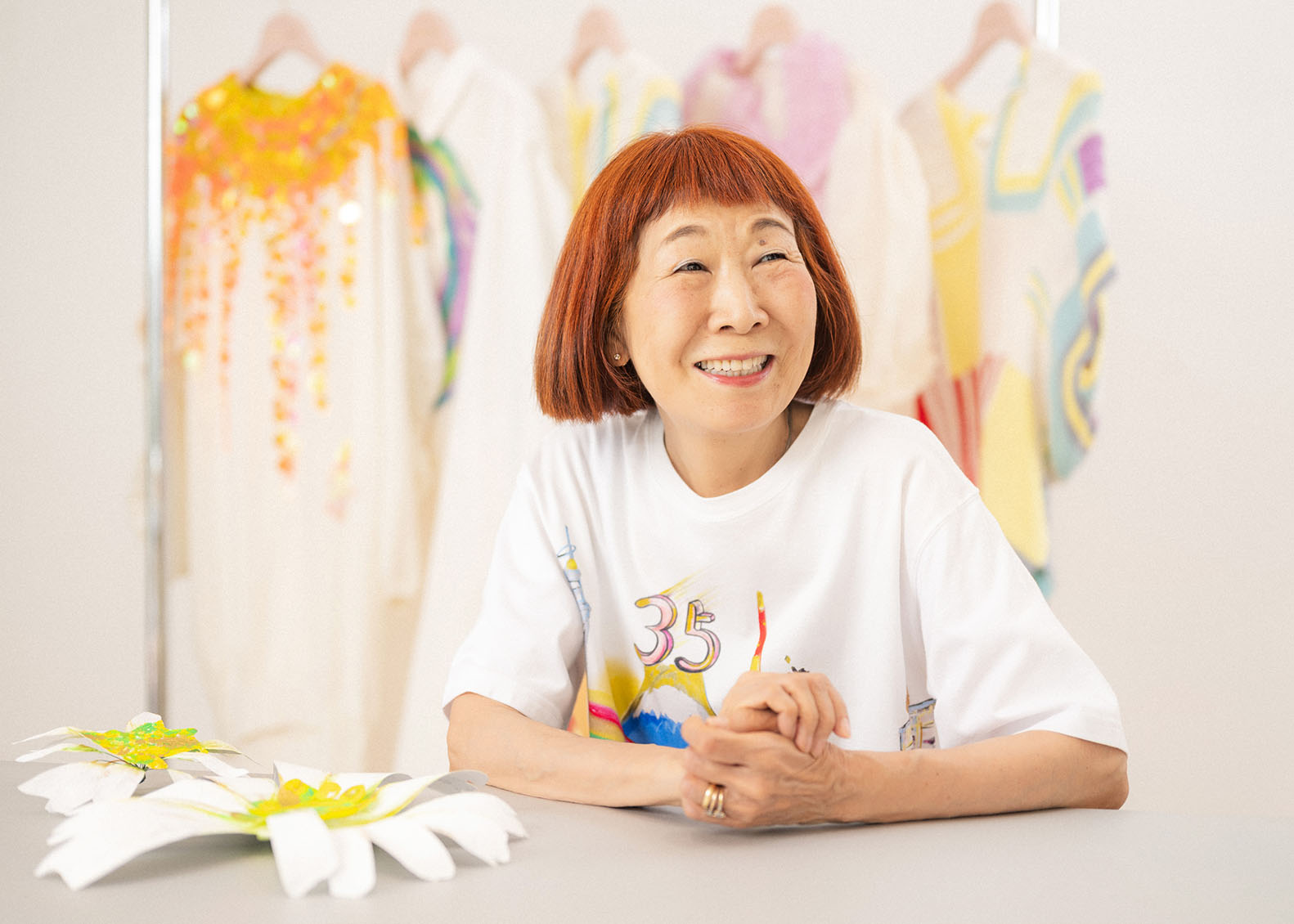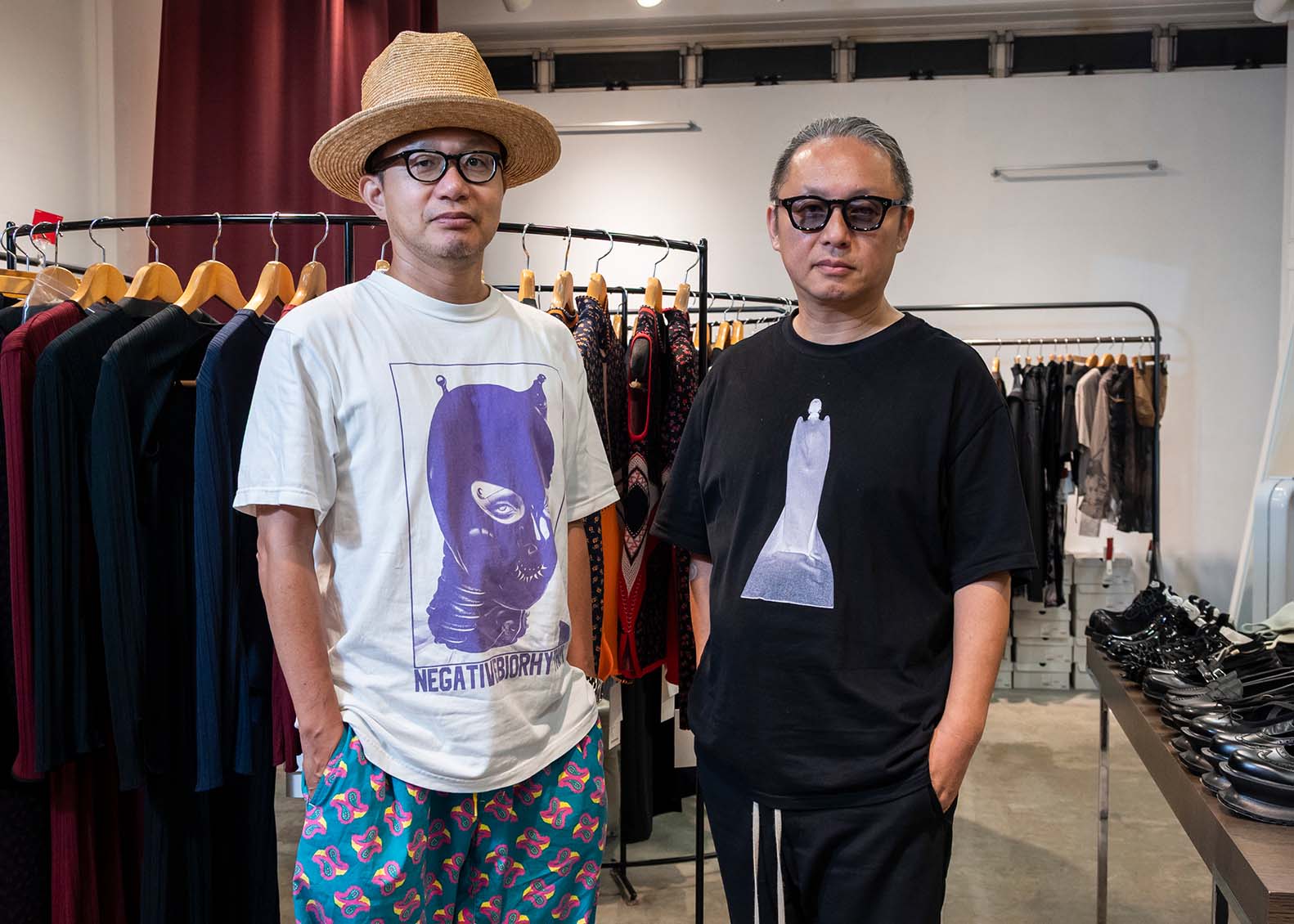MOTONARI ONO
Motonari ono is a brand with a sense of couture that does not pale in comparison to high-end U.S. and European brands. While being a casual mainstream Tokyo brand, it is also unique in its own way. Motonari Ono, a young designer who is only 29, spent his school days learning how to create clothes in London and Antwerp. After training at a maison in London, he returned to Japan and established the brand “motonari ono.” Mr. Ono, a “self-proclaimed otaku designer,” says of his brand: “I just keep making what I think is cool, so there actually is no message. My designs are heavily influenced by Gothic-Lolita fashion and my high school days, when fashion was really popular”.
We asked the versatile fashion prodigy about episodes in his life up to his debut, the different values in European and Japanese fashion, and his 2011-12 Fall-Winter collection to be announced in March.
You announced your 2011 Spring-Summer collection in a short movie format which gave us a more elegant and erotic impression than usual. What was your theme?
Ono:Military couture. I wanted to show both the hard military aspect and the romantic aspect — I use a lot of lace and frills in my style — in one collection. It seems like men’s wear, yet is elegant; hard yet tender.
I’ve had the military theme from when I used “female knights in medieval Europe” as my theme for my second collection(2009 Spring-Summer)after my 2008-09 Fall-Winter debut collection. At the time, I had just started my collection and I wasn’t able to express myself fully. I felt that my collection was incomplete, so now that I’m able to express my feelings in my work, I wanted to try my hand once more at a military theme, with better quality.
Ono’s first fashion film, using the artist Malcolm Pate. Malcolm, a 24 year old Canadian, is an up-and-coming young photographer/fashion filmmaker based in London.
How was the reaction to your collection?
Ono:My pieces will be newly sold in the Nihonbashi Mitsukoshi and Seibu Shibuya stores in Japan starting from 2011 Spring-Summer. I’m happy that department stores are increasingly moving toward supporting new designers. My work was largely featured in the “Creators meet Shibuya* ” held last August in the Seibu Shibuya store. In response to my video, it seems that my customers highly praised my attitude of trying something new.
In shows, there are limits to things like the number of models we can use due to budgetary constraints, and so you cannot express yourself 100%. The advantage of video is that you can spend plenty of time on hair and makeup, and present a perfect creation with just one model.
*An event that was a collaboration between the Seibu Shibuya store and JFW, where new fashion pieces and miscellaneous goods by JFW creators were introduced and sold for a limited time only.



Why did you choose to work in fashion? What made you decide on this career path?
Ono:I’m from Fuji City in Shizuoka Prefecture, so I was basically brought up at the base of Mt. Fuji. Right now I’m 29, but when I was in high school, Japanese fashion was all the rage. At the time, visual-style bands were popular and many people copied their styles, so everyone including myself would be dressed in eccentric outfits(laughs). It was a time when fashion had momentum, so I naturally became interested in fashion. “Brands” were popular, so I spent all the money I earned from my part-time jobs on clothes.
After graduating from high school, you went to Tokyo and enrolled at the Mejiro Fashion & Art College, then went to London after graduation, is that correct?
Ono:I wanted to go to the Central Saint Martins College of Art and Design, so I first went to the London College of Fashion(LCF)for one year. At LCF, they taught you how to create portfolios for acceptance at colleges, and the normal flow of things in the UK is to take an art course from high school, go on to a foundation course, and then go to college for two or three years.
After graduating from LCF, I heard that Antwerp also had a good school, so I also applied to the Antwerp Royal Academy of Fine Arts. I was accepted at both Antwerp and Saint Martins, so I decided to go to Antwerp, which had lower tuition(laughs).
I went to Antwerp and just as I had started thinking that perhaps London was better suited for me, a friend from LCF introduced me to Bora Aksu, who looked at my work and invited me to work with him. I joined him as a patterner, but apparently the two designers of matohu had also worked with him before me. I guess they trust Japanese people for technical things.
I learned patterning on my own, but I think I was able to do so because of my studies in London. In Japan, when students are unsure of how to do something, they tend to ask before they think, but in London, you are first encouraged to try out what you think is right. I was really able to cultivate this ability to think for myself in London. I worked with Bora for two seasons, but I absorbed a lot as everything was produced in the atelier.

After returning to Japan in 2006, you established the brand “motonari ono”. Looking back, what are your thoughts on that period of your life?
Ono:Right after coming back to Japan, I had no idea where to start… I didn’t know how to invite people to my personal exhibition, so I looked up joint exhibition information in “So-en” magazine. There, I found out that there was a system called the “yellow booth” in rooms, where newcomers could exhibit their work for one season only at a discount. When I exhibited the work that I made in London, I got a call from Mika Sato, the executive producer of rooms, who suggested that we do something fun together. We launched a massive exhibition right afterwards. However, since I did not have any income immediately after launching my brand, I earned my living drawing illustrations. I also wanted to work drawing pictures. Even now, I draw illustrations for magazines and advertisements.
By exhibiting at rooms, I met a lot of people. I always liked the singer Mika Nakashima, and watched Ms. Nakashima’s music videos when I was in London. The styling was done by Yasuhiro Watanabe, and was very cool. I thought that when I launched my own brand, I wanted Mika Nakashima to wear my clothes, and then, in a twist of fate, it happened! First, the stylist Yuko Omori saw my work in rooms and used it on the cover of “So-en”. Then, I received a call from Yasuhiro Watanabe, who said he saw this cover. From this encounter, Yasuhiro Watanabe did the styling for my first runway show. Last year, Mika Nakashima wore a costume I designed, and I actually met her in person! I’ve also been able to cooperate with several other celebrities on their wardrobes. I designed the clothes that singer Ken Hirai wore in a commercial, and I created the outfit that singer Kumi Koda wore in the Kohaku Uta Gassen music show two years ago.

“motonari ono” also has impressive shoe designs. Are there any details that you pay attention to in particular, or any special feelings?
Ono:I want to create ladies’ shoes that are like men’s shoes, and use wing tips, golf shoe details, and incorporate other elements from men’s dress shoes. Perhaps it is my fondness for molding, but I want to create shoes as well as clothes that you can’t find in other stores. But people always ask me, “don’t you have something more normal?”(laughs) Of course, I can make normal things too, but then I think that you might as well find something from another brand. That’s why I want to make things that you can’t find in other stores.
I make the shoes at a factory in my hometown of Shizuoka, and I actually had another fateful encounter here. I wanted to concentrate on shoe-making, and was looking for factories in places like Asakusa, but everywhere I looked, production was based on the division of labor and there was no place where one person made the shoes entirely on their own. After asking around, a friend from middle school introduced me to a shoe factory run by someone they knew. When I visited the factory, I was told that they didn’t have the right craftsman for me at the moment, but one trained in Italy would soon be coming back. This led to the factory becoming my sponsor and providing the funds for my show. The sponsorship contract finished after two seasons, and just as I was thinking that I wouldn’t be able to put on any more shows, I was presented with the opportunity to collaborate with the YKK Corporation. It was at this time that I also met with Sakae Lace, which makes the Leavers lace that is indispensable in my clothing. I still receive their support.
The timing of everything was great. When I first launched my brand, I thought that my designs would sell as soon as I mounted an exhibit, but this was not the case in reality — it is a gradual process. I consider it a lesson in life.

You have had ample experience abroad, but what do you feel are the differences between fashion values in Japan and abroad?
Ono:I think that the breadth of values and scope of praise are greater overseas. Last year, I was chosen as a finalist for the “MANGO Fashion Awards”, and when I looked at the creations of the other nine finalists, the creation other than my own that I predicted would be selected was chosen for the Grand Prix. It was too bad that my creation was not chosen for the Grand Prix, but I was happy that the judging was done based on the same values as mine, and that my vision was not off. Also, the fact that a Spanish designer has not yet won the Grand Prix also made me think that they were evaluating fairly. This contest awards 18,000 Euros to each of the ten finalists as a reserve, and the prize money of the Grand Prix is 300,000 Euros! They also conduct PR for you, so they act as a huge support. I think that it is wonderful that a corporation is working so hard to develop young artists. I think it is a difference in the nation’s awareness of fashion, but Europe and the United States have the culture of recognizing what’s good as good.
Japan is a country of convenience, and I think we are truly blessed on the production side. However, the creative aspects such as design and support given are more attractive overseas. However, foreign designers always say that Japan is good. For instance, if you want to put a logo on a button, you can do this straight away in Japan. But overseas, technologies such as fine laser engravings that are normal in Japan are few and far between. I went to Europe instead of Japan because I wanted to study in the home of fashion. But when I was in Europe, I thought about how good the quality of technology in Japan is, which made me want to return to Japan. And then when I got back to Japan, all I can think about is how amazing the support in Europe is.(Laughs) I guess you always want what you can’t have.
You are a ”self-proclaimed otaku designer”(laughs); what manga do you like in particular?
Ono:I’m often asked this question, but if I answer truthfully, people would not know what I am talking about. I normally rsay “One Piece”, “Dragon Ball”, or “Slam Dunk”.(Laughs) If I wanted to give an honest answer, my current favorites are “Usogui” and “Battle Angel Alita”. The theme of “Usogui” is gambling, and “Battle Angel Alita” is sci-fi.
Even though it’s not a manga, I also love the “Final Fantasy” game series. I truly respect the illustrator Yoshitaka Amano, who worked on the character design. He is also from Shizuoka, and I often went to “Yoshitaka Amano” exhibits in my hometown when I was little.

You also participated in the 11th JFW special event “GUNZE BODYWILD × SNOOPY × TOKYO Designers” a little while back. Is there a collaboration that you would like to do in the future?
Ono:I would like to try anything, if I had the chance! I can do illustrations, and would like to try a collaboration that can take advantage of this.
Finally, you are going to be participating in the Tokyo Collection Week this March. If you don’t mind telling us, what kind of image do you have for your 2011-12 Fall-Winter collection?
Ono:I’m thinking of doing 60’s fashion next. I want to create a futuristic expression, or the future that was depicted at the time, like Pierre Cardin. There were a lot of monotones in my work until now, so I want to inject some color by using fancy tweeds and creating items with a 60’s style silhouette.
*The world’s largest contest hosted by the major Spanish apparel company, "MANGO". It is held every other year, and last year was the third contest.

